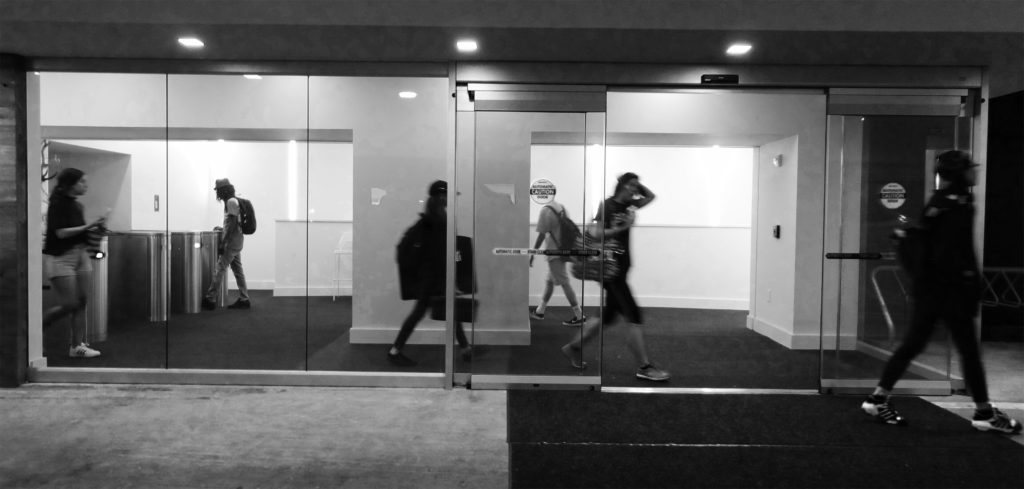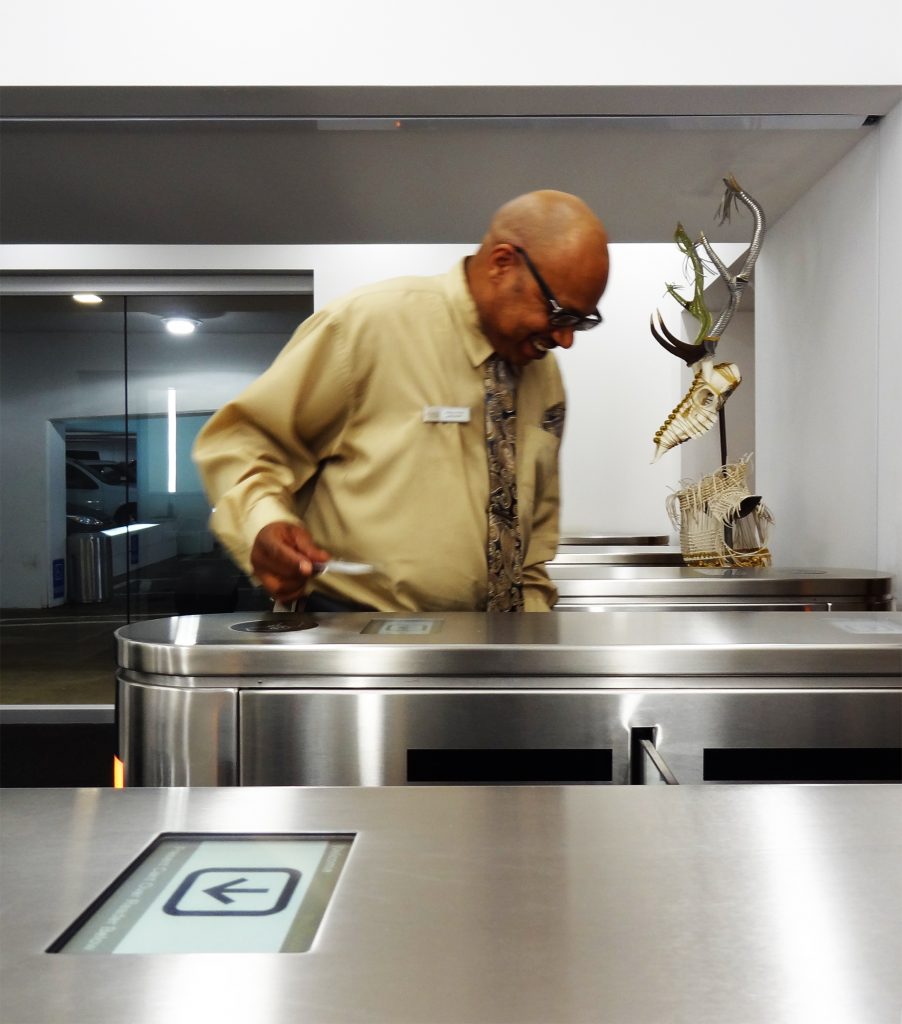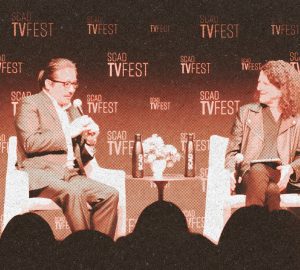Interview: Dean Art Malloy on SCAD’s new entrance policies

With a new school year comes new changes. As incoming and returning SCAD students flooded the hallways on Sept. 12, many were enamoured with the many renovations, specifically the new SCAD Atlanta gym as well as the new third floor in the main building.
However, not all changes were met with excitement. Students took to social media to express their discontent with the new entrance policy. Many were concerned that the new turnstile entrance wouldn’t be able to accommodate the rush of students, resulting in long lines. Others cited inconvenience as well as bewilderment that the front entrance of their school could not be used by paying students, but rather reserved only for prospective incoming students.
Shortly after hearing the concerns of the students, The Connector sat down with Art Malloy, dean of SCAD Atlanta, to hear what the administration’s plans were.
In order to shorten the length and deliver the relevant information, parts of the interview discussing other topics were left out.
What prompted SCAD to build a new entrance in the back of the building?
“We have made major renovations over the past couple of years. You have probably seen the third floor. Last year you would have seen the fourth floor…It’s just making sure that the entrances are safe and secure. We wanted to upgrade our security, so SCAD has purchased some of the most sophisticated equipment that you’ll ever see on any college campus in order to get out students in and out safely.”
“We used to touch the ID of every student. I’m not so sure how well that was received. The rationale behind it was to absolutely ID each person, so we found another mechanism that would do that. When you scan your ID, there’s another person that would be behind you that is looking at the person who is scanning the ID and looking at their picture, so actually your picture comes up each time you scan it. So that’s another way that we can absolutely ID everyone, but it also helps us track who’s in the building at all times.”
“We did that because most people park there, so it seems like the most logical place. We do understand that it’s a bit inconvenient for those who live in 1660 Apartments, so we have had discussions about how we can make sure that the side of the building is also shored up with motion detection lights and things like that. So when it gets darker earlier as they’re walking by, they’ll feel safer because the lights are going to come on. And of course we have cameras on that section too, so they’ll be watching.”
Do you know when the decision will be made about whether or not the main entrance in the front will be accessible to students?
“A final decision hasn’t been made on that. And when it is, we’ll definitely communicate that to students….But what I can tell you is that the majority of our students never use that entrance, anyway. The majority of our students used the rear entrance. But I can’t tell you when that decision will be made and final. But I would assume that it’ll happen soon. Probably shortly after we open the one in the back and to see the impact. Because I think we’ll have to do that to see how that works out. I think we’ll do whatever we need to do that’s going to be in the best interest of safety and security for our students. Not so much convenience, because safety and security will always trump convenience.”
Is there anything else you would like to let the students know in regards to the new regulations?
“Well, what I’d like to say is that we welcome the feedback from students. So they can let us know how they feel about safety and security because we take it very seriously. And as you can see of the investments that we’ve made in safety and security– one, we’ve hired more officers. We have someone who is– actually, we have multiple people who are dedicated to doing nothing else but to monitor the cameras every single day, 24/7. We did not have that a year ago. A year ago, that was an officer in the back that was looking, trying to help get people in and look at the monitors at the same time. Now we have two dedicated people that are there…and we have upgraded our entire camera system.”
“But I welcome an opportunity to have discussions with students if they would like to, so does John Crowe, our Director of International Security. He and I work very closely together, and he has an open door policy, too. So, hey, listen, we don’t always get it right. We know that. We don’t always get it right, but we’re certainly more than willing…to listen to our students if they have something that they want to share with us. If they think we’re…missing the mark, we’d like to know. I mean, I just heard from a student this morning. She told me that she wants us to address this area over here. This is the exit. She said it’s hard to cross the street coming from 1660. She said it’s even harder for those people if they get off a bus and they’re trying to cross over Peachtree. So we know that there are some things that we can work on to make the campus safer and more secure, but I can tell you one thing. I feel like we’ve come a very, very long way in a short period of time. Again, growth and progress can be uncomfortable sometimes, but it just requires that we find ways to communicate as effectively as we can with our students. So, yes, in the future, we will make sure that we are doing the things to keep the students well-informed about the wonderful changes that we’re trying to make.”
A few other things mentioned by Dean Malloy include:
The lack of special privileges for faculty:
“I had access to several different ways to get into the building. I won’t have that access anymore. And I’m not 100% happy about it, but I also understand why we’re doing it. So I can’t come in the side door anymore. This badge would work on the side door. I can’t use this to come in the side anymore, so now I have to come through the same way everybody else does. The vice-president comes in the same way everybody else does. The vice-president for SCAD Atlanta, the senior vice-president comes in the very same place.”

Safety:
“I think this is probably, of all the places I’ve worked – and I’ve said this on many occasions – this is the safest place I’ve ever worked. This is the safest university I’ve ever worked at, and this is university number six for me.”
“So again, I know it’s not always convenient. But I think the parents simply want to know that…their sons and daughters are safe. And I feel very comfortable with saying, yes, I believe our students are safe here.”
After speaking with the dean, The Connector reached out to the leader of the now-disbanded petition, Megan Cockcroft. By then she had spoken to the dean as well, clearing up the misinformation that had been spreading throughout the campus.
MC: “I started the petition because there was a lot of misinformation about the security system floating about. I didn’t know Dean Malloy had an open door policy so I just went for what I thought would get results fast…the Dean contacted us first when he saw our petition posters at spring house! He was very helpful and understanding. He’s opened the basement entrance so that students can access the building without walking through traffic. We’ve met with him twice now, and he has been very helpful in working with us on safety concerns.”
When Megan and her co-petitioner handed in the petition, it had roughly 240 signatures.



























